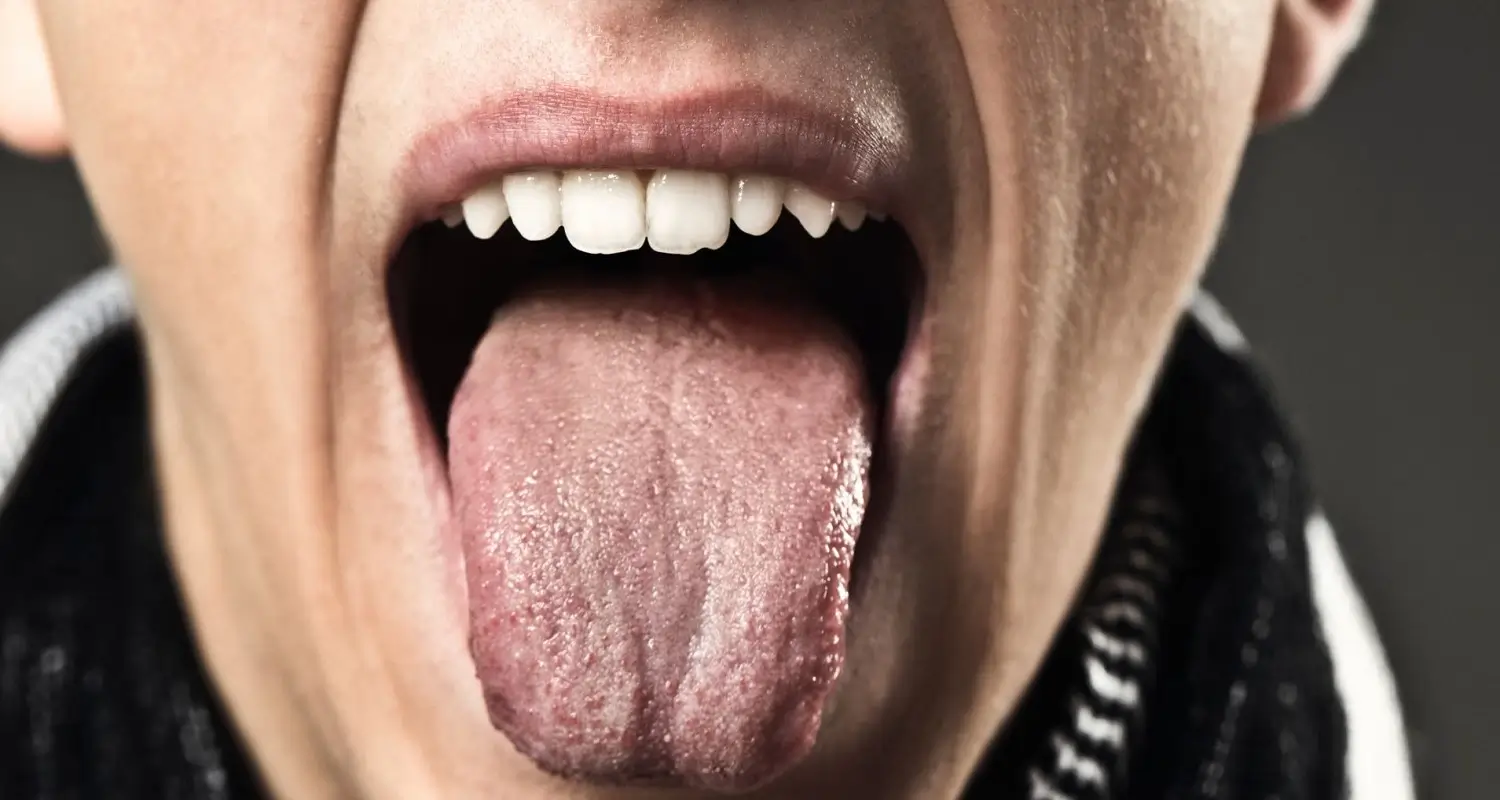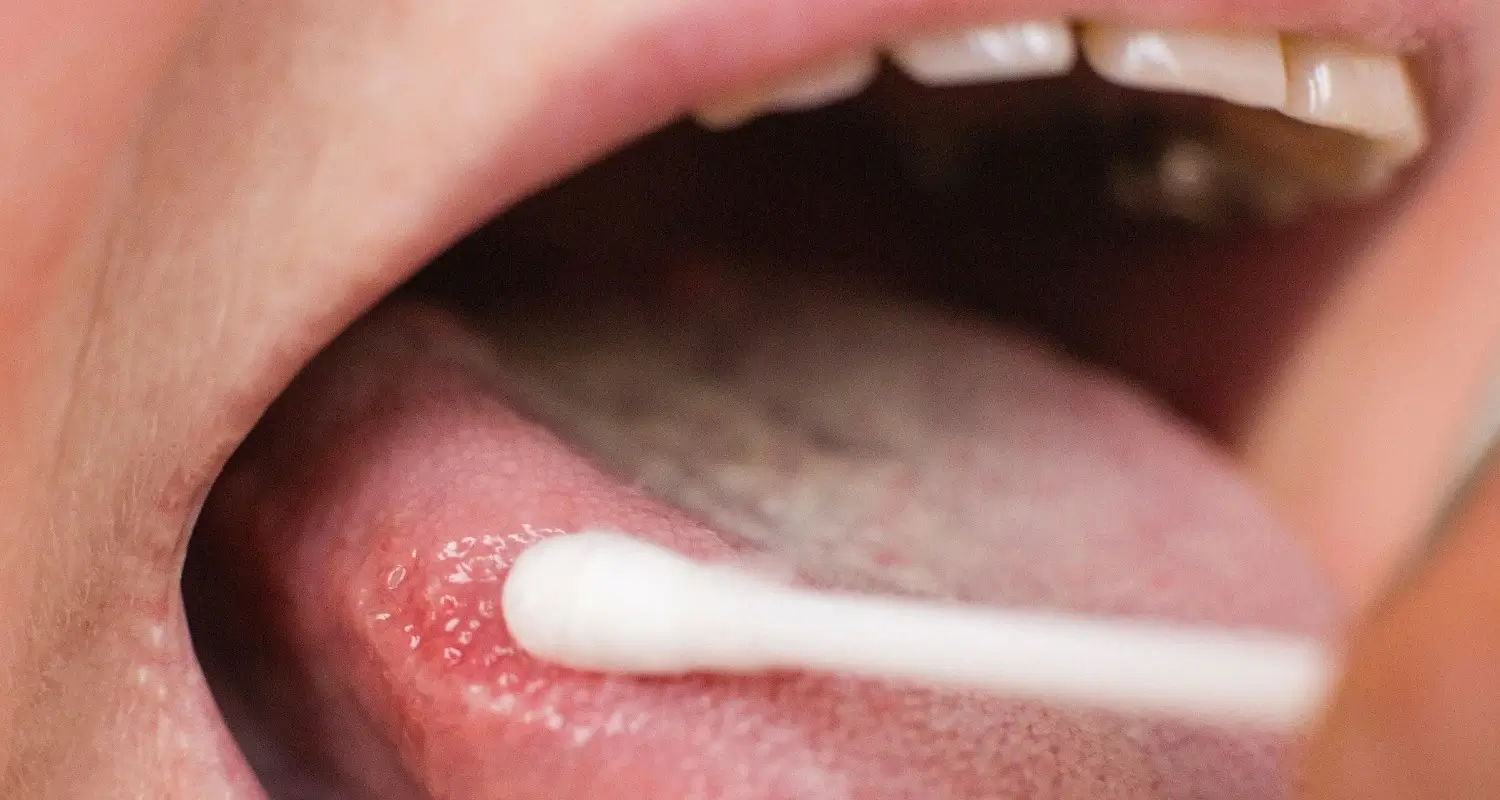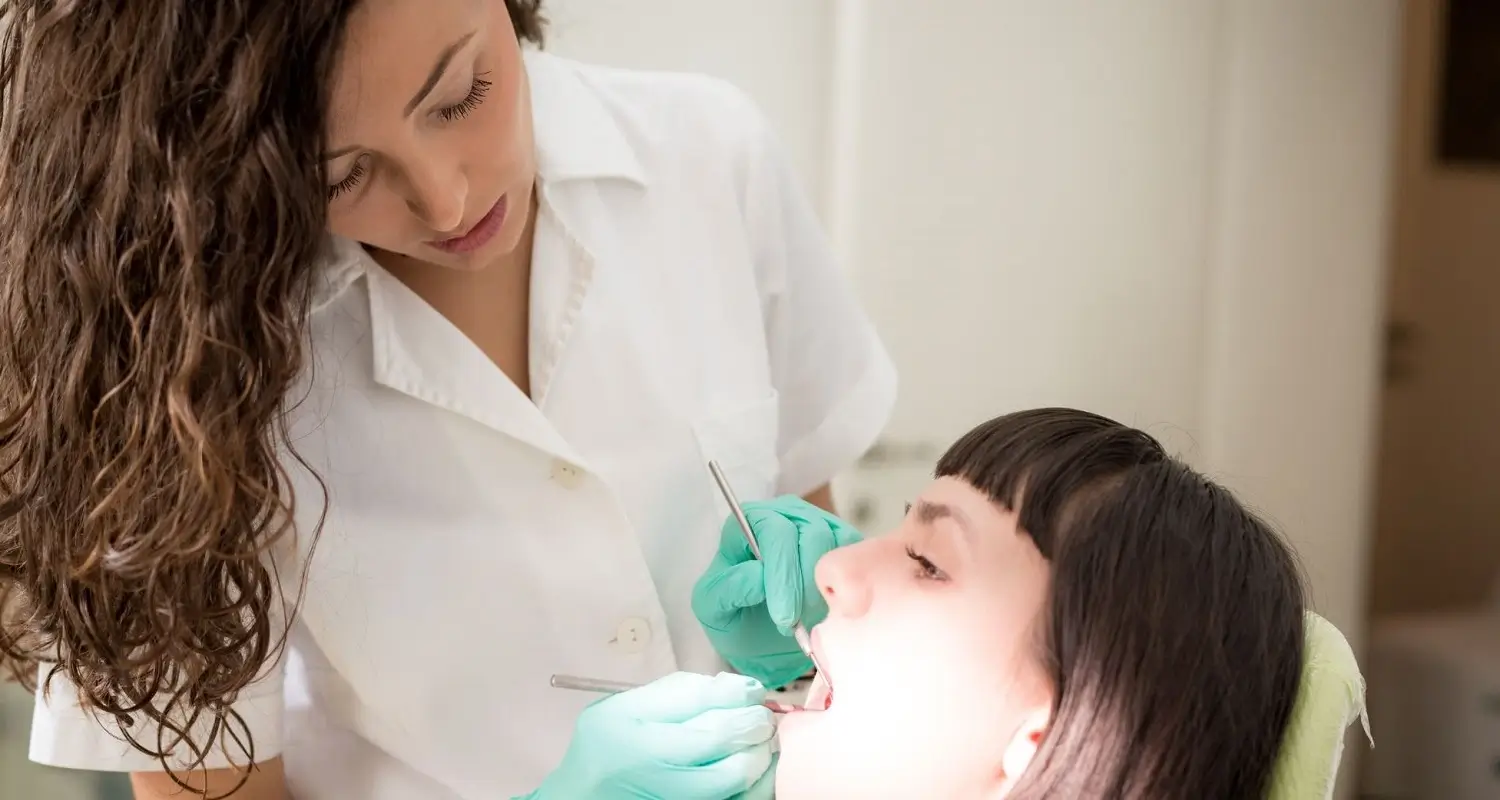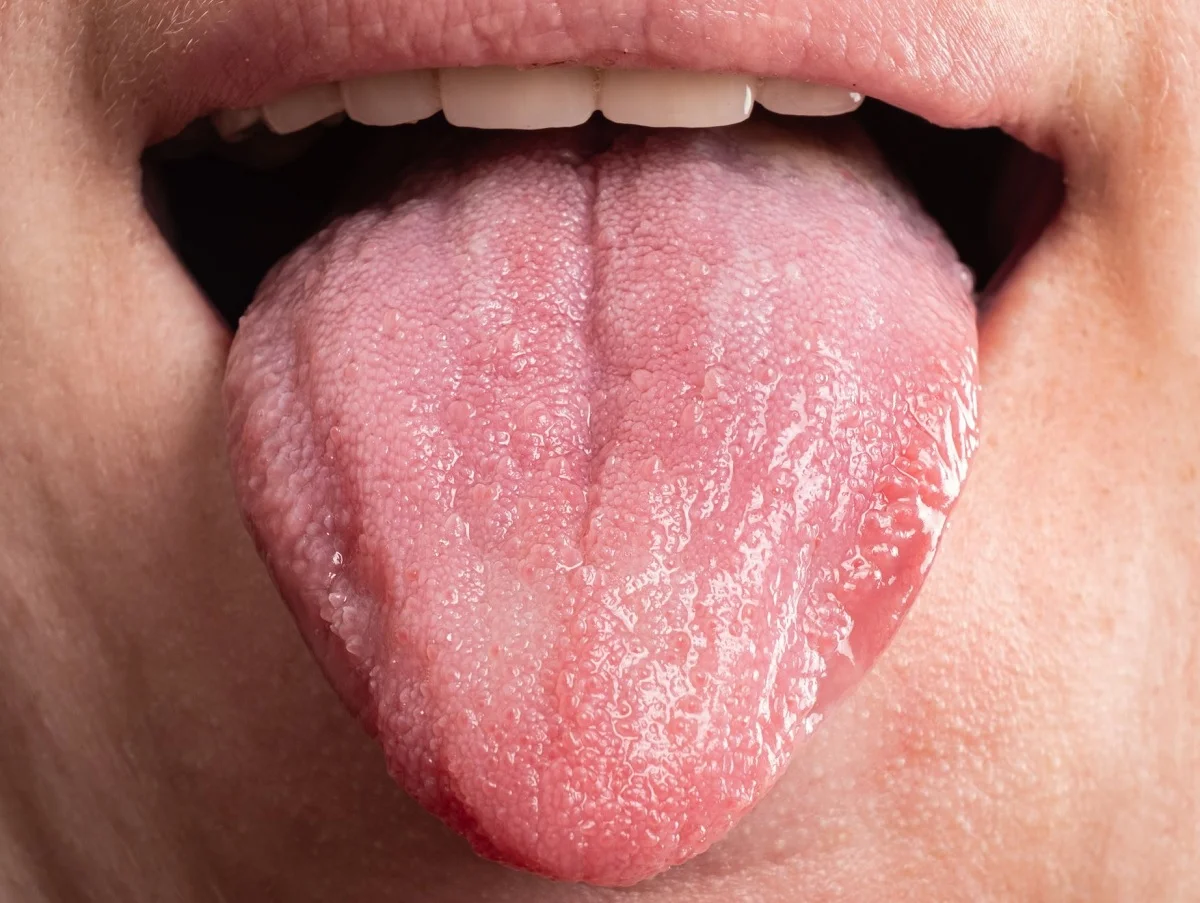Last Updated on: 12th June 2024, 08:46 am
✓ Fact Checked 🕓
❙ Our team of writers, editors, and medical experts rigorously evaluates each article to ensure the information is accurate and exclusively cites reputable sources.
❙ We regularly assess how the content in this article aligns with current scientific literature and expert recommendations in order to provide the most up-to-date research.
Understanding Bumps on the Back of the Tongue: Causes and Care
Have you ever noticed bumps on the back of your tongue and wondered what they could be? This is more common than you think. It is an issue that worries many people, even when it comes to painless bumps.
Here we bring you a complete guide to help you understand what those bumps could be, why they appear, and what you can do about them. Other conditions like black tongue and geographic tongue are also harmful. So you can check them out before it’s too late.
Tongue Anatomy
On the surface of the tongue are small bumps, called papillae. Some contain structures designed to capture flavors and send this information to the central nervous system, translated into taste sensations. The latter are the taste buds. Lingual papillae can be of four types:
● Filiform papillae: They are the most abundant on the tongue, small and round in shape. They do not capture flavors, since they do not contain taste buds.
● Fungiform papillae: They are so-called because they have a shape similar to a mushroom. They have sensory cells and are located near the tip of the tongue, in the anterior part.
● Foliate papillae: They are found on the lateral sides of the tongue and are leaf-shaped. They contain the taste buds.
● Goblet or circumvallate: They are the largest lingual papillae. They have taste buds and are located at the back of the tongue, creating a “V” shape.

What are the Bumps on the Back of the Tongue?
Bumps on the back of the tongue can vary in size, shape, color, and texture. they may or may not cause discomfort. If these lumps appear as swollen, pink bumps and do not cause pain, it is likely enlargement of the goblet or circumvallate lingual papillae, those found on the back of the tongue. In most cases, these lumps are usually harmless and usually disappear in a few days.
What if the Bumps on the Back of the Tongue are Painful?
If these bumps on the back of the tongue cause pain and discomfort, it may be an inflammation of the lingual papillae, known as lingual papillitis.
What are the symptoms of lingual papillitis?
This condition can manifest on a small part or the entire tongue, with symptoms generally varying in duration from a few hours to a maximum of two weeks. When taste buds become inflamed, they can cause:
1. Sensitivity and pain, especially when consuming hot foods
2. Increase in size
3. Alterations in the perception of taste
4. Burning sensation
5. Reddened or yellowish appearance
What are the causes of lingual papillitis?
The most common types of lingual papillitis are:
1. Gastroesophageal reflux
2. Viral or bacterial infections
3. Allergies
4. Dental prostheses or restorations in poor condition
5. Excessive consumption of acidic or spicy foods.
6. Consumption of very hot foods or drinks
7. Smoking
8. Nutritional deficiencies
Give time to read this article if you are experiencing a numb or tingling tongue.

Can inflammation of the Lingual Papillae be a Sign of a Serious Health Problem?
Although it is not common, it is important to note that a swelling of the tongue that does not hurt and does not go away after a few days could be one of the first signs of tongue cancer. Therefore, in the event of this symptom, it is recommended to consult a doctor to perform the appropriate examination.
Home Remedies for Bumps on the Tongue
If the goblet papillae have shown any temporary enlargement due to overstimulation, it is not necessary to apply a treatment. However, if it is lingual papillitis, some home remedies could help. Here are some tips to relieve the discomfort caused by inflamed taste buds:
● Apply ice to your tongue before eating, as cold has anesthetic properties.
● Apply over-the-counter topical anesthetics to reduce discomfort.
● Consult a doctor to control acid reflux.
● Rinse with warm water and salt three times a day.
● Drink chamomile tea, as its anti-inflammatory properties can help.
● Drinking aloe vera juice can help soothe inflammation and pain.
● Avoid foods that are too sweet, acidic or hot.
● Maintain good oral hygiene by brushing your teeth after each meal.
● Do not use mouthwashes with alcohol, as they can further irritate the tongue.
● Rinse with calendula infusions to reduce inflammation.
● Reduce tobacco and vape consumption.
Medical Treatments for Bumps on the Tongue
In rare cases, an inflammation of the lingual papillae requires treatment. Symptoms usually resolve within a few days. If treatment is needed, it will depend upon the cause of the inflammation. If it is of infectious origin, the health professional may prescribe medications or mouthwashes.

When to See a Doctor?
Inflammation of the taste buds usually goes away without treatment. However, it is recommended to seek medical attention if any of the following symptoms occur:
● Inflammation of the lingual papillae that does not subside after a week.
● Fever.
● Recurrent inflammation.
● Localized or multiple growths on the tongue.
● Swelling of the lymph nodes.
● Changes in the taste of food.
● Large lesions that do not cause pain and persist for several days.
If you want to know when you have a healthy tongue, click here.
Conclusion
● Bumps on the back of the tongue can be a cause for concern, but they are not always a sign of something serious.
● It is vital to know the possible causes and treatments to be able to act in an informed manner.
● Carious natural remedies can relieve the discomfort secondary to lingual papillitis.
● If the bumps on your tongue do not disappear after a couple of days, do not hesitate to seek dental care for an accurate diagnosis.
Frequently Asked Questions
Should I be alarmed by bumps on the back of my tongue?
In the vast majority of cases, lumps on the tongue are not a cause for worry. However, if you notice large lumps that persist for a long time or cause significant pain, we recommend consulting a health professional. A doctor or dentist can diagnose your condition and help you regain your well-being in a short period of time.
Why do the papillae on the back of the tongue enlarge?
Temporary lingual papillitis is a benign condition that results in the appearance of small elevations in the upper posterior region of the tongue. Although the specific reason for this condition is still uncertain, some of the probable causes may be stress, gastrointestinal disorders, tobacco use, and eating spicy foods. The symptoms tend to disappear within a few days and rarely require medical intervention.
Is it common to find bumps at the back of the throat?
People are often alarmed when they see raised tissue in this area, fearing that it could be signs of cancer. However, these bumps are usually harmless. What you see as “stones” in the mirror are generally accumulations of fluid that form temporarily in response to infections, allergens or different types of irritants.
What nutritional deficiency could cause bumps to form on the top of the tongue?
The tiny elevations on the tongue, known as papillae, may begin to wear away, resulting in a smooth, shiny lingual surface. Although this could be due to infections, medications and other conditions, a deficiency of vitamin B12 or other nutrients can also be responsible; cases, the tongue could also appear irritated.
Share:
References
1. Holland, K. (Feb 21, 2019). Supertaster: Definition, benefits, and drawbacks. Healthline. https://www.healthline.com/health/food-nutrition/supertaster
2. Doherty, C. (Feb 11, 2020). Bumps on the tongue: Causes of transient lingual papillitis. Verywell Health. https://www.verywellhealth.com/transient-lingual-papillitis-4788309
3. Higuera, V. (Jan 21, 2015).Tongue bumps: Potential causes and treatments. Healthline. https://www.healthline.com/health/dental-and-oral-health/tongue-bumps
4. Ren, W., Cha, X., Xu, R., Wang, T., Liang, C., Chou, J., Zhang, X., Li, F., Wang, S., Cai, B., Jiang, P., Wang, H., Liu, H., & Yu, Y. (2023). Cisplatin attenuates taste cell homeostasis and induces inflammatory activation in the circumvallate papilla. Theranostics, 13(9), 2896–2913. https://doi.org/10.7150/thno.81153
5. Nall, R., MSN, & CRNA. (Jan 22, 2018). Swollen taste buds: Causes, diagnosis, and treatment. Medicalnewstoday.com. https://www.medicalnewstoday.com/articles/320684














